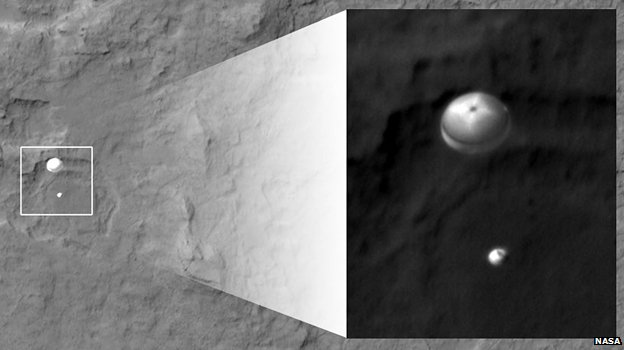
Dee Finney's blog
start date July 20. 2011
todays date August 19. 2012
updated as it goes
PAGE 266
TOPIC: CURISOITY ROVER BY NASA - AND AMERICAN ENGINEERS AND WORKERS
WHO CONTRIBUTED TO EVERY PART THAT MADE THIS A SUCCESSFUL MISSION

Mars Landing: NASA's Curiosity Rover Safely Touches Down
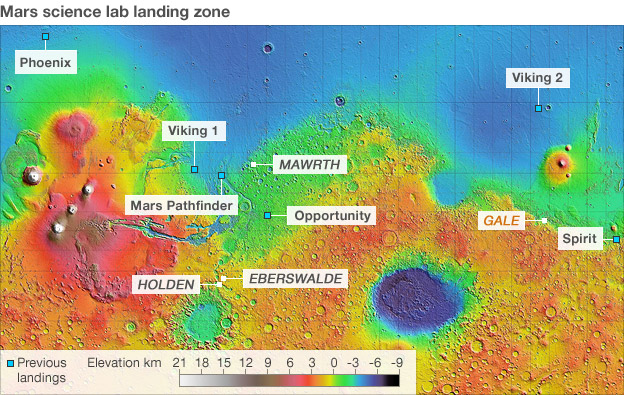
The Skycrane will lower MSL-Curiosity on to the relatively
flat valley floor
on the end of tethers before blasting away
to a safe distance. The robot will
then drive up to the base
of the central mountain.
In front of it, the rover should should find abundant quantities
of clay
minerals that will give fresh insight into the very wet
early epoch of the Red
Planet. Above the clays, the deposits
change to sulphates, which relate to a
period in time when
Mars was still wet but was beginning to dry out.
In addition, there is evidence water flowed down the mountain
at some point
in the past, cutting a deep gully and depositing
sediments out on the plain.
The rover will get to investigate all of this.
"The suite of things that we can see at Gale represents a diverse
number of
environments over a long period of time, possibly tens
to hundreds of millions
of years, plus the modern environment,"
said Dawn Sumner, a geologist at the
University of California Davis, US.
"It's also going to be just an incredibly beautiful place - it will be a
lot
like the southwest of the US, areas like Monument Valley where
you have
steep-sided cliffs with the rover going in the shallower
valleys between them,"
the co-chair of the landing site working group
explained.
Gale was selected after a rigorous investigation of some 60 competing
sites.
The selection process took five years and involved about 150
researchers.
High-resolution imagery was acquired of the best sites, and Nasa even
built
models of some of the site surfaces and dropped a simulation rover
on to them to
assess their suitability.
Michael Watkins, the mission's project engineer, said the expected
precision
of the new entry, descent and landing system meant that
the space agency could
have chosen any of the top contenders.
"We can control the lift of the vehicle a little bit during entry and we can
cancel out some unexpected differences in atmospheric drag that would
cause the
landing zone to be large," he told reporters.
"Previous missions have had landing zones that have been up to 10 times
larger than MSL. MSL is going to land in a 20km-across spot."
MSL-Curiosity has been funded for an initial surface mission of two years.
But the fact that Nasa's Opportunity rover continues to roll across the Red
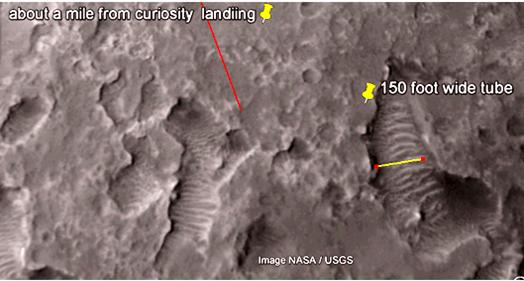
Subject: Dr. Richard Buchli D.V.M. Ph.D. write, "An 150 foot wide tube -less than a mile from Curiosity Land Rover."
The $2.5 billion robotic explorer, the centerpiece of the
Mars Science Laboratory mission, landed on the Red Planet August 5,
beginning a two-year trek around Mars' Gale Crater. Curiosity probably doesn't
have smarts to find Mars signs of life. Curiosity could find organics, but a new
set of instruments are likely needed to find 'biomarkers'. Fortunately
macrobiotic life was found by both Viking Landers in 1976.
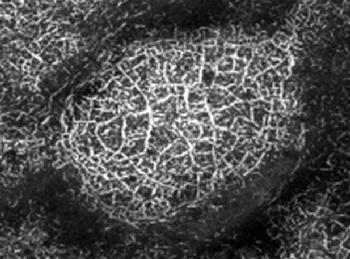
ROADS?
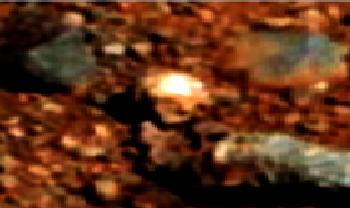
PEOPLE ARE SAYING THIS IS A HUMAN SKULL
Planet today, seven years after landing, suggests the new vehicle may
have a
very long life ahead of it. What is more, the new vehicle carries a
nuclear
battery that will provide ample power on a planet where dust
storms can blight
the operation of solar panels.
MSL-Curiosity is currently being prepared for its November launch at
Nasa's
Kennedy Space Center.
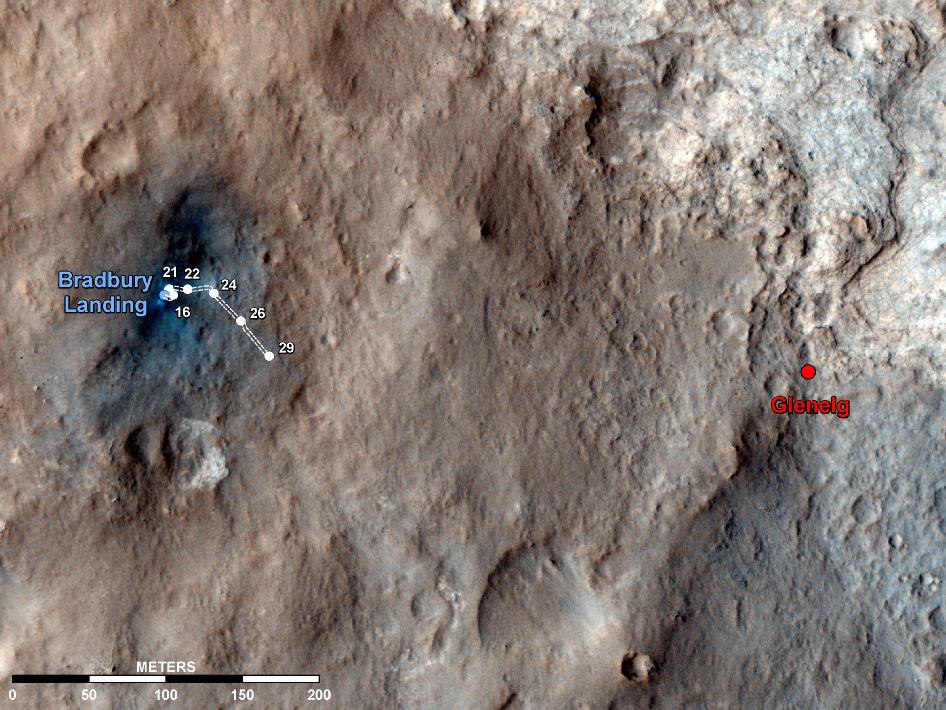
and
http://www.facebook.com/marscuriosity
and
http://www.twitter.com/marscuriosity
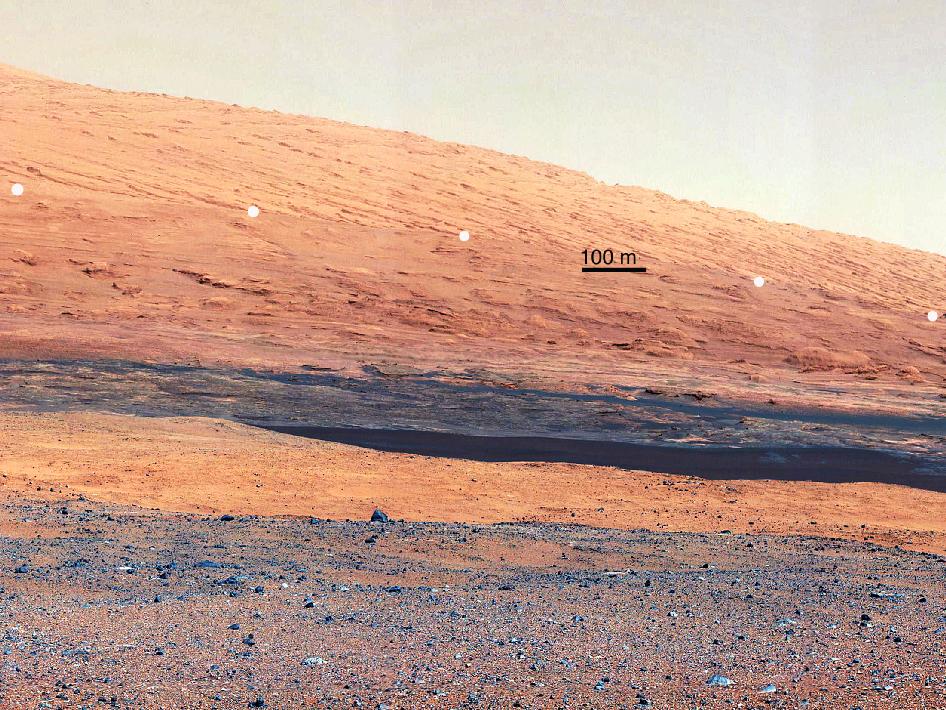
MARS MOUNT SHARP
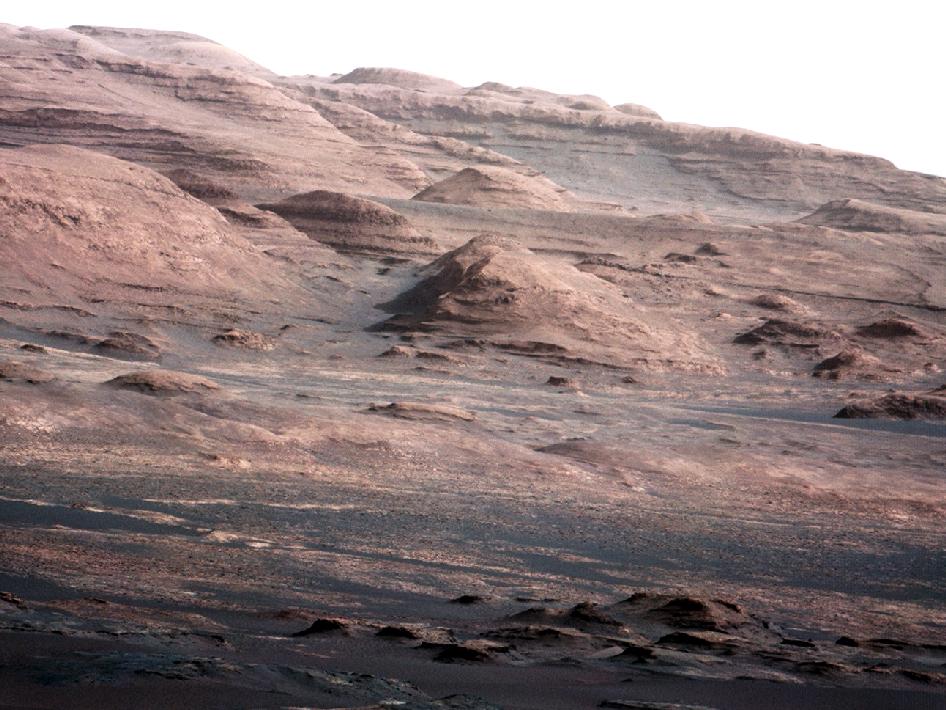
BASE LAYERS OF MOUNT SHARP
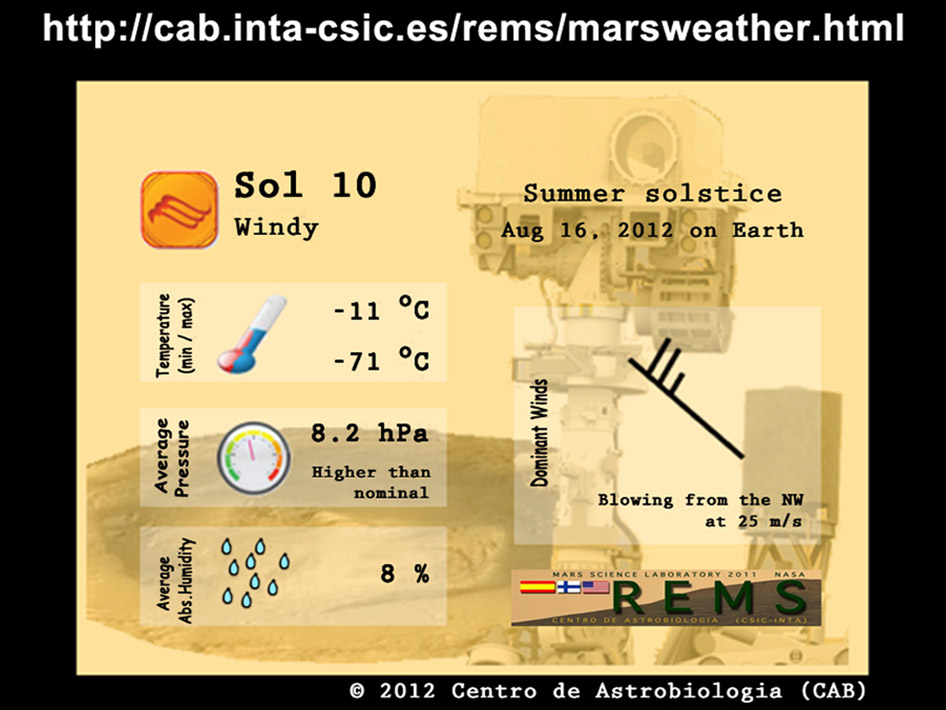
MARS WEATHER REPORT AT CURIOSITY SITE
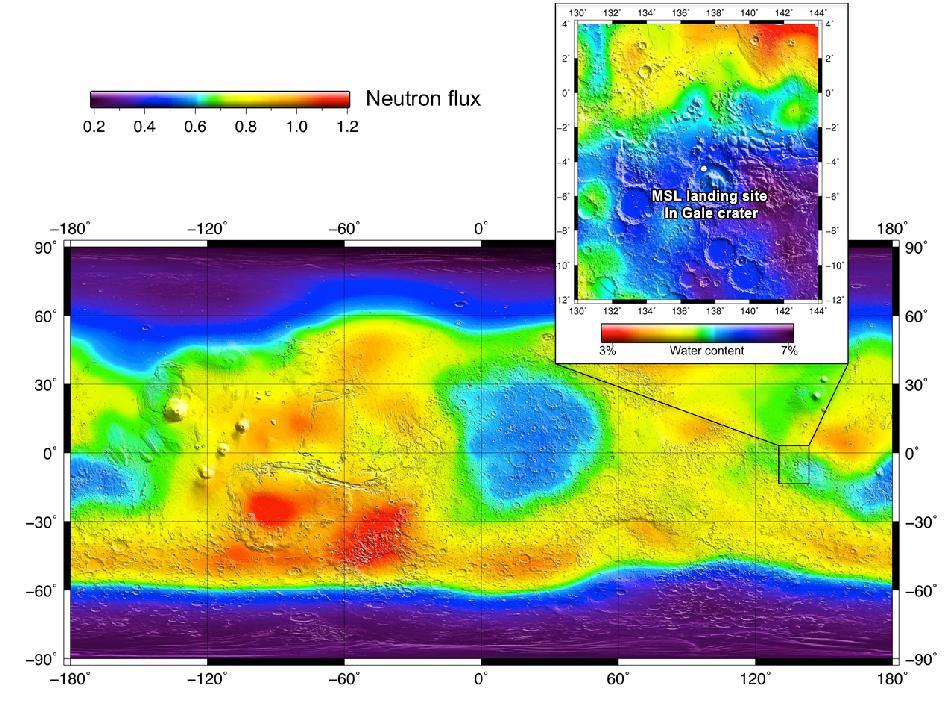
The heritage for investigations with the Dynamic Albedo of Neutrons
instrument on NASA's Curiosity rover comes from NASA's Odyssey orbiter. The
orbiter has performed global mapping of neutrons, showing varying degrees of
hydrogen in the Martian soil as indicated on this chart. The hydrogen is an
indicator of the presence of water.
Now, Curiosity will continue this research on the ground at Gale Crater. In
addition to using neutrons that are produced by galactic cosmic rays, as was the
case with Odyssey, the DAN can generate pulses of neutrons on its own. This will
contribute to more efficient studies of water-bearing minerals along Curiosity's
path through Gale Crater.
Image credit: NASA/JPL-Caltech/Russian Space Research Institute
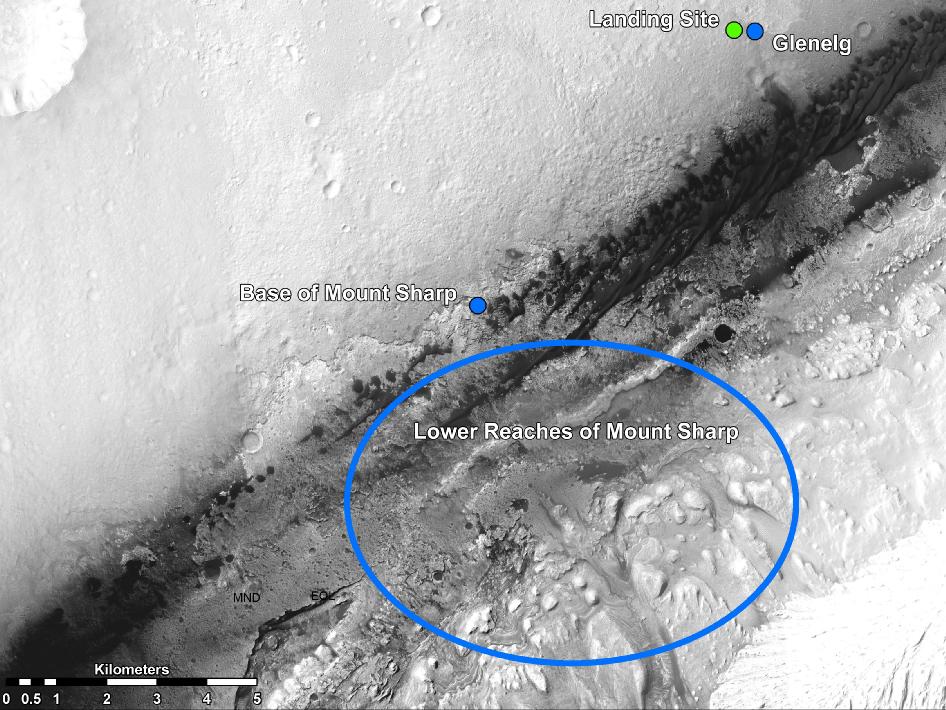
MARS - CURIOSITY LANDING SITE
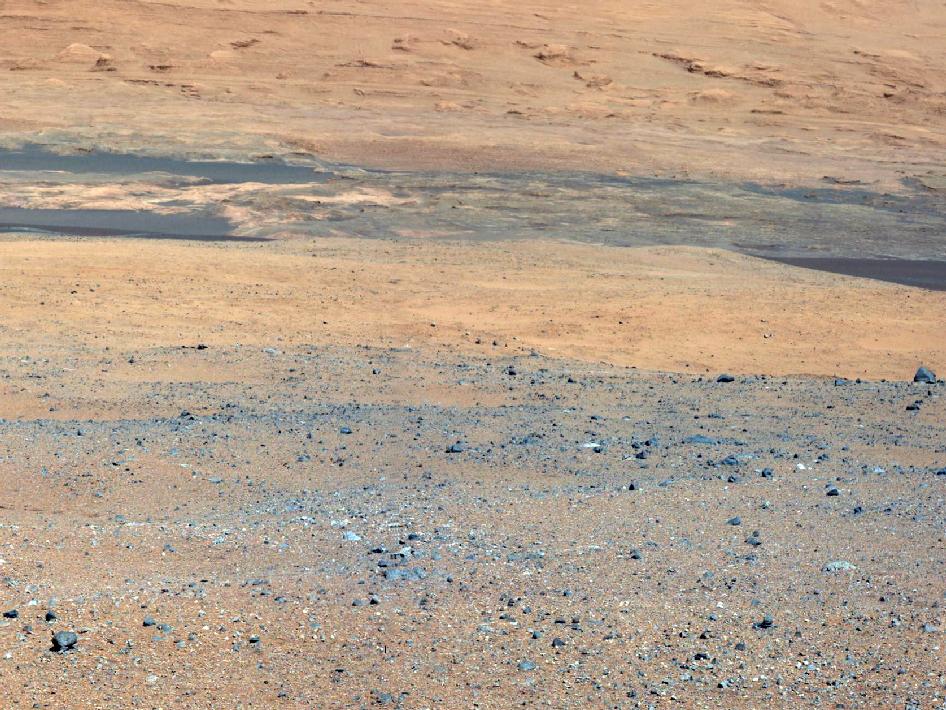
MARS - MOUNT SHARP HIGHER RESOLUTION
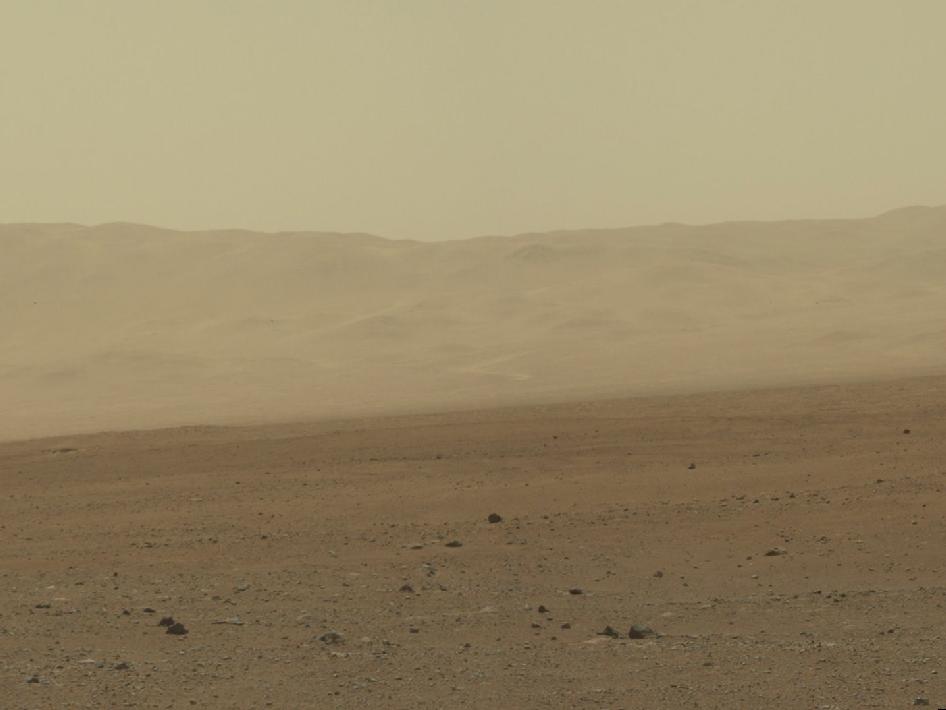
MARS-GALE CRATER WALL
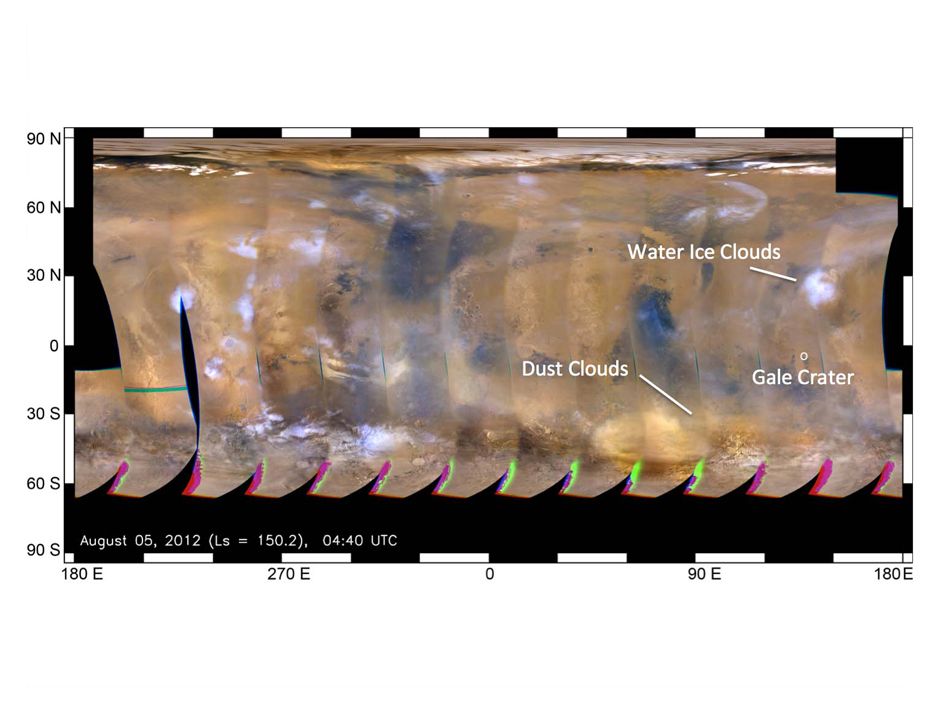
MARS WEATHER MAP - AUGUST 5, 2012
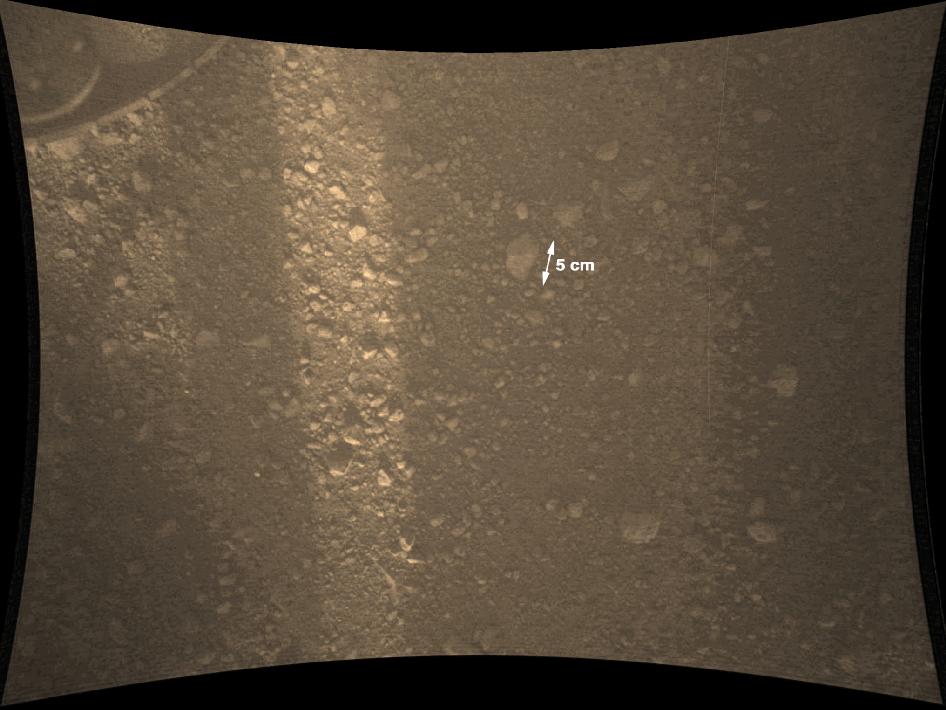
MARS GRAVEL SURFACE
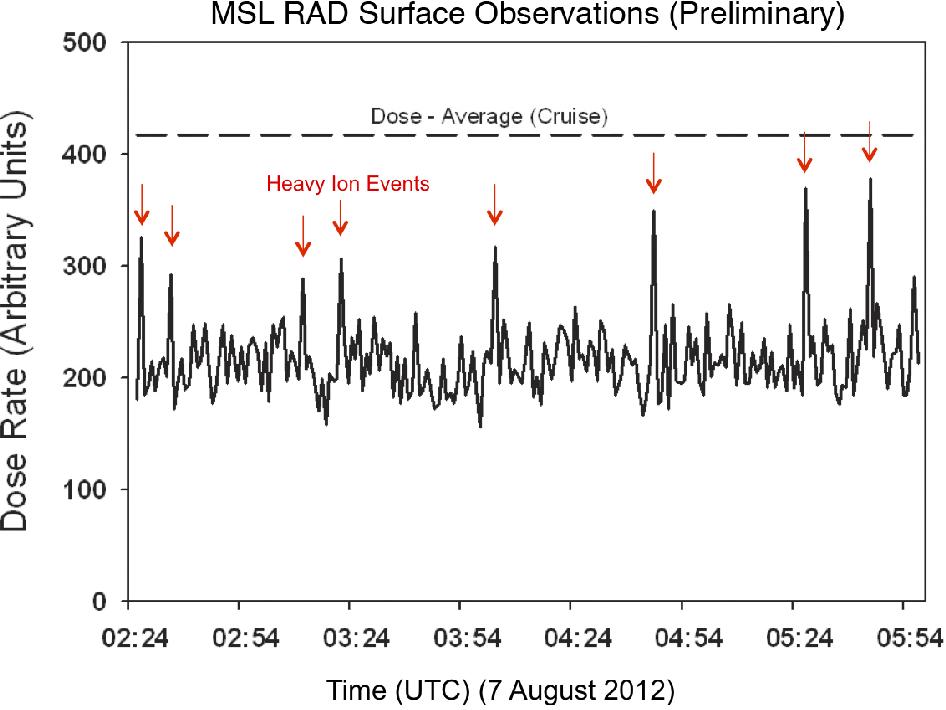
MARS RADIATION MEASUREMENTS
MARS ANOMALY
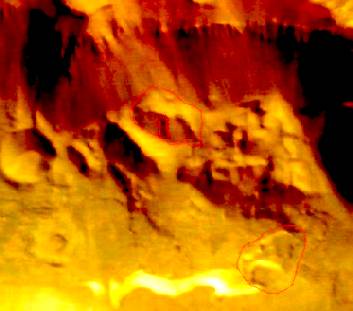
DO YOU SEE A DOOR IN THE RED AREA?
 NASA's
Curiosity rover has uncovered a "bright object" in the red soil of Mars that
might be a part of the robotic explorer that broke off, NASA said Monday in a
statement.
NASA's
Curiosity rover has uncovered a "bright object" in the red soil of Mars that
might be a part of the robotic explorer that broke off, NASA said Monday in a
statement.
"Curiosity is acquiring additional imaging of the object to aid the team in identifying the object and assessing possible impact, if any, to sampling activities."
The rover had parked at a sand pit late last week, where it was to scoop up soil in order to clean and test its geological sampling hardware.
The $2.5 billion craft landed in Gale Crater on August 6, opening a new chapter in the history of interplanetary exploration. Thanks to NASA
Mars Rock Touched By NASA Curiosity Rover Offers Surprises
PASADENA, Calif. -- The first Martian rock NASA's Curiosity
rover has reached out to touch presents a more varied composition than expected
from previous missions. The rock also resembles some unusual rocks from Earth's
interior.
The rover team used two instruments on Curiosity to study the chemical makeup of
the football-size rock called "Jake Matijevic." The results support some
surprising recent measurements and provide an example of why identifying rocks'
composition is such a major emphasis of the mission. Rock compositions tell
stories about unseen environments and planetary processes.
"This rock is a close match in chemical composition to an unusual but well-known
type of igneous rock found in many volcanic provinces on Earth," said Edward
Stolper of the California Institute of Technology in Pasadena, Calif., who is a
Curiosity co-investigator. "With only one Martian rock of this type, it is
difficult to know whether the same processes were involved, but it is a
reasonable place to start thinking about its origin."
On Earth, rocks with composition like the Jake rock typically come from
processes in the planet's mantle beneath the crust, from crystallization of
relatively water-rich magma at elevated pressure.
Jake was the first rock analyzed by the rover's arm-mounted Alpha Particle X-Ray
Spectrometer (APXS) instrument and about the thirtieth rock examined by the
Chemistry and Camera (ChemCam) instrument. Two penny-size spots on Jake were
analyzed Sept. 22 by the rover's improved and faster version of earlier APXS
devices on all previous Mars rovers, which have examined hundreds of rocks. That
information has provided scientists a library of comparisons for what Curiosity
sees.
"Jake is kind of an odd Martian rock," said APXS Principal Investigator Ralf
Gellert of the University of Guelph in Ontario, Canada. "It's high in elements
consistent with the mineral feldspar, and low in magnesium and iron."
ChemCam found unique compositions at each of 14 target points on the rock,
hitting different mineral grains within it.
"ChemCam had been seeing compositions suggestive of feldspar since August, and
we're getting closer to confirming that now with APXS data, although there are
additional tests to be done," said ChemCam Principal Investigator Roger Wiens of
Los Alamos National Laboratory in New Mexico.
Examination of Jake included the first comparison on Mars between APXS results
and results from checking the same rock with ChemCam, which shoots laser pulses
from the top of the rover's mast.
The wealth of information from the two instruments checking chemical elements in
the same rock is just a preview. Curiosity also carries analytical laboratories
inside the rover to provide other composition information about powder samples
from rocks and soil. The mission is progressing toward getting the first soil
sample into those analytical instruments during a "sol" or Martian day.
"Yestersol, we used Curiosity's first perfectly scooped sample for cleaning the
interior surfaces of our 150-micron sample-processing chambers. It's our version
of a Martian carwash," said Chris Roumeliotis, lead turret rover planner at
NASA's Jet Propulsion Laboratory (JPL) in Pasadena, Calif.
Before proceeding, the team carefully studied the material for scooping at a
sandy patch called "Rocknest," where Curiosity is spending about three weeks.
"That first sample was perfect, just the right particle-size distribution," said
JPL's Luther Beegle, Curiosity sampling-system scientist. "We had a lot of steps
to be sure it was safe to go through with the scooping and cleaning."
Following the work at Rocknest, the rover team plans to drive Curiosity about
100 yards eastward and select a rock in that area as the first target for using
the drill.
During a two-year prime mission, researchers will use Curiosity's 10 instruments
to assess whether the study area ever has offered environmental conditions
favorable for microbial life. JPL, a division of Caltech, manages the project
and built Curiosity. For more about the Mars Science Laboratory Curiosity rover
mission, visit:
10-12-12
RELEASE : 12-359PASADENA, Calif. -- The first Martian rock NASA's Curiosity
rover has reached out to touch presents a more varied composition than expected
from previous missions. The rock also resembles some unusual rocks from Earth's
interior.
The rover team used two instruments on Curiosity to study the chemical makeup of
the football-size rock called "Jake Matijevic." The results support some
surprising recent measurements and provide an example of why identifying rocks'
composition is such a major emphasis of the mission. Rock compositions tell
stories about unseen environments and planetary processes.
"This rock is a close match in chemical composition to an unusual but well-known
type of igneous rock found in many volcanic provinces on Earth," said Edward
Stolper of the California Institute of Technology in Pasadena, Calif., who is a
Curiosity co-investigator. "With only one Martian rock of this type, it is
difficult to know whether the same processes were involved, but it is a
reasonable place to start thinking about its origin."
On Earth, rocks with composition like the Jake rock typically come from
processes in the planet's mantle beneath the crust, from crystallization of
relatively water-rich magma at elevated pressure.
Jake was the first rock analyzed by the rover's arm-mounted Alpha Particle X-Ray
Spectrometer (APXS) instrument and about the thirtieth rock examined by the
Chemistry and Camera (ChemCam) instrument. Two penny-size spots on Jake were
analyzed Sept. 22 by the rover's improved and faster version of earlier APXS
devices on all previous Mars rovers, which have examined hundreds of rocks. That
information has provided scientists a library of comparisons for what Curiosity
sees.
"Jake is kind of an odd Martian rock," said APXS Principal Investigator Ralf
Gellert of the University of Guelph in Ontario, Canada. "It's high in elements
consistent with the mineral feldspar, and low in magnesium and iron."
ChemCam found unique compositions at each of 14 target points on the rock,
hitting different mineral grains within it.
"ChemCam had been seeing compositions suggestive of feldspar since August, and
we're getting closer to confirming that now with APXS data, although there are
additional tests to be done," said ChemCam Principal Investigator Roger Wiens of
Los Alamos National Laboratory in New Mexico.
Examination of Jake included the first comparison on Mars between APXS results
and results from checking the same rock with ChemCam, which shoots laser pulses
from the top of the rover's mast.
The wealth of information from the two instruments checking chemical elements in
the same rock is just a preview. Curiosity also carries analytical laboratories
inside the rover to provide other composition information about powder samples
from rocks and soil. The mission is progressing toward getting the first soil
sample into those analytical instruments during a "sol" or Martian day.
"Yestersol, we used Curiosity's first perfectly scooped sample for cleaning the
interior surfaces of our 150-micron sample-processing chambers. It's our version
of a Martian carwash," said Chris Roumeliotis, lead turret rover planner at
NASA's Jet Propulsion Laboratory (JPL) in Pasadena, Calif.
Before proceeding, the team carefully studied the material for scooping at a
sandy patch called "Rocknest," where Curiosity is spending about three weeks.
"That first sample was perfect, just the right particle-size distribution," said
JPL's Luther Beegle, Curiosity sampling-system scientist. "We had a lot of steps
to be sure it was safe to go through with the scooping and cleaning."
Following the work at Rocknest, the rover team plans to drive Curiosity about
100 yards eastward and select a rock in that area as the first target for using
the drill.
During a two-year prime mission, researchers will use Curiosity's 10 instruments
to assess whether the study area ever has offered environmental conditions
favorable for microbial life. JPL, a division of Caltech, manages the project
and built Curiosity. For more about the Mars Science Laboratory Curiosity rover
mission, visit:
VIDEO - DOCTORED PHOTOS? http://www.youtube.com/watch?v=bpkKY3DAtiY&feature=em-unknown
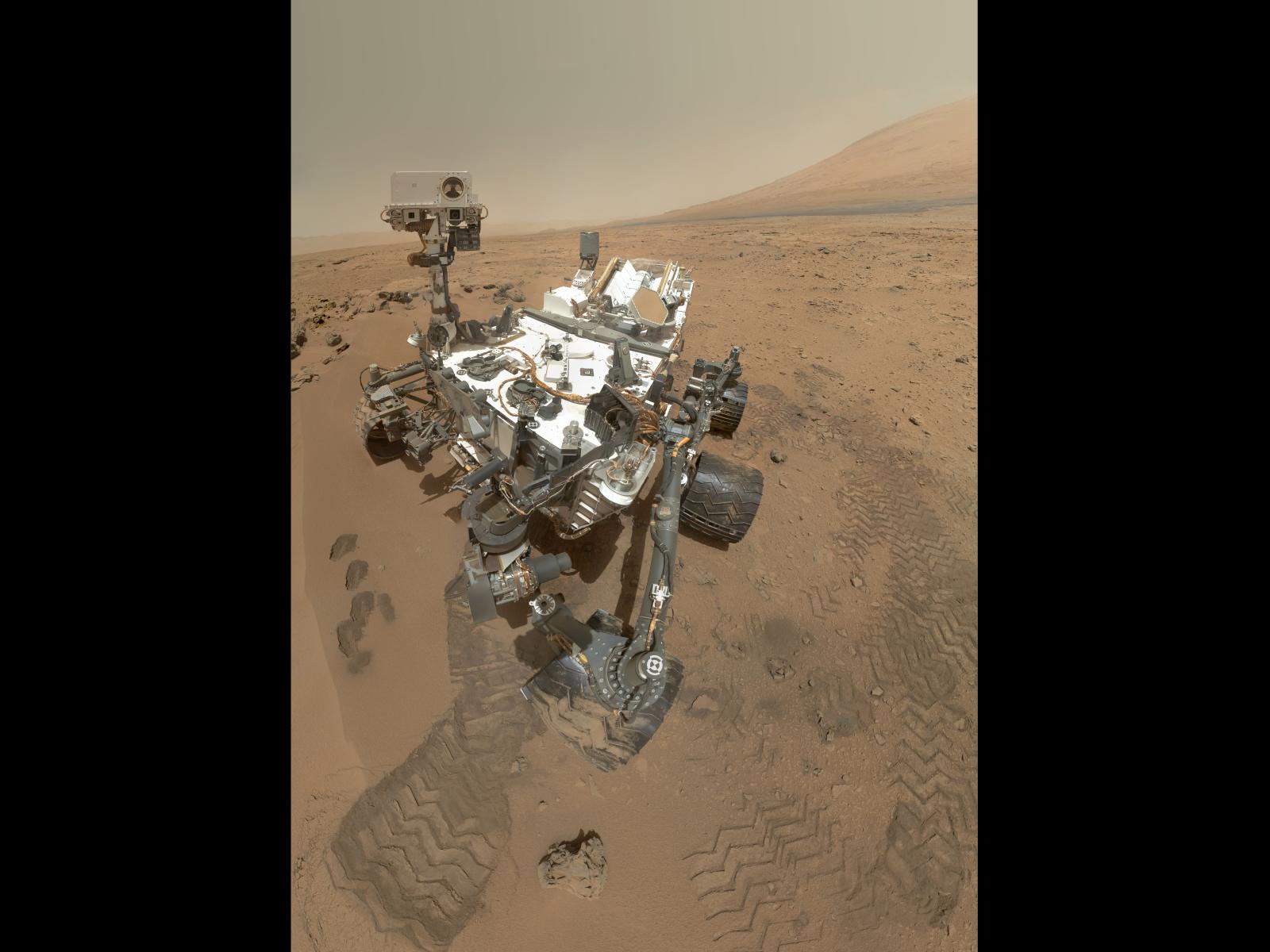
ARE THOSE ALIEN FOOTPRINTS IN FRONT OF THE ROVER?
WHO TOOK THE PHOTO?
http://www.facebook.com/marscuriosity